Francesca Letizia
IMS Space Consultancy for the European Space Operation Center
Towards Automated Satellite Conjunction Management with Bayesian Deep Learning
Dec 23, 2020

Abstract:After decades of space travel, low Earth orbit is a junkyard of discarded rocket bodies, dead satellites, and millions of pieces of debris from collisions and explosions. Objects in high enough altitudes do not re-enter and burn up in the atmosphere, but stay in orbit around Earth for a long time. With a speed of 28,000 km/h, collisions in these orbits can generate fragments and potentially trigger a cascade of more collisions known as the Kessler syndrome. This could pose a planetary challenge, because the phenomenon could escalate to the point of hindering future space operations and damaging satellite infrastructure critical for space and Earth science applications. As commercial entities place mega-constellations of satellites in orbit, the burden on operators conducting collision avoidance manoeuvres will increase. For this reason, development of automated tools that predict potential collision events (conjunctions) is critical. We introduce a Bayesian deep learning approach to this problem, and develop recurrent neural network architectures (LSTMs) that work with time series of conjunction data messages (CDMs), a standard data format used by the space community. We show that our method can be used to model all CDM features simultaneously, including the time of arrival of future CDMs, providing predictions of conjunction event evolution with associated uncertainties.
Spacecraft Collision Risk Assessment with Probabilistic Programming
Dec 18, 2020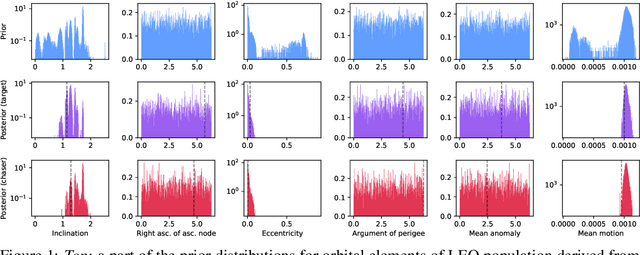

Abstract:Over 34,000 objects bigger than 10 cm in length are known to orbit Earth. Among them, only a small percentage are active satellites, while the rest of the population is made of dead satellites, rocket bodies, and debris that pose a collision threat to operational spacecraft. Furthermore, the predicted growth of the space sector and the planned launch of megaconstellations will add even more complexity, therefore causing the collision risk and the burden on space operators to increase. Managing this complex framework with internationally agreed methods is pivotal and urgent. In this context, we build a novel physics-based probabilistic generative model for synthetically generating conjunction data messages, calibrated using real data. By conditioning on observations, we use the model to obtain posterior distributions via Bayesian inference. We show that the probabilistic programming approach to conjunction assessment can help in making predictions and in finding the parameters that explain the observed data in conjunction data messages, thus shedding more light on key variables and orbital characteristics that more likely lead to conjunction events. Moreover, our technique enables the generation of physically accurate synthetic datasets of collisions, answering a fundamental need of the space and machine learning communities working in this area.
Spacecraft Collision Avoidance Challenge: design and results of a machine learning competition
Aug 07, 2020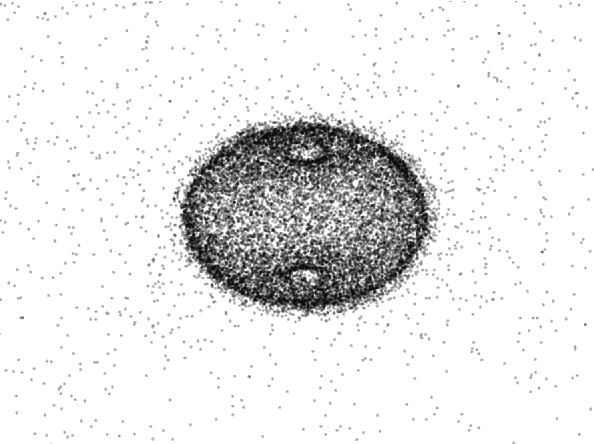
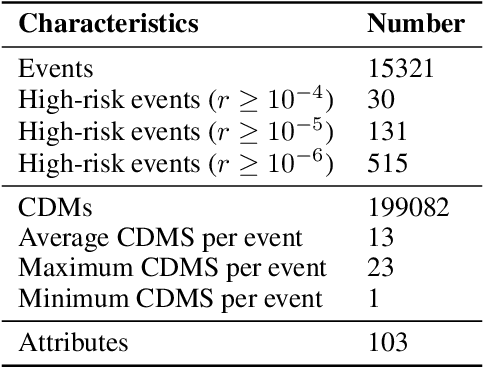
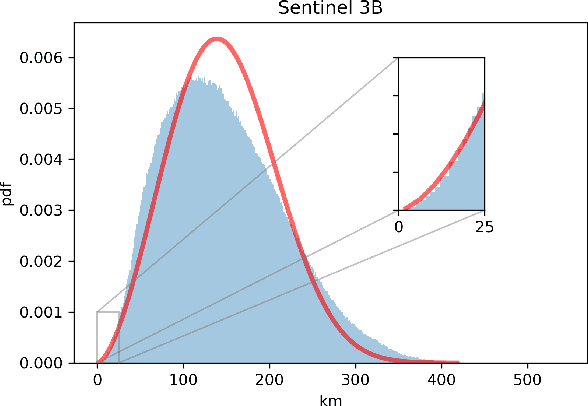

Abstract:Spacecraft collision avoidance procedures have become an essential part of satellite operations. Complex and constantly updated estimates of the collision risk between orbiting objects inform the various operators who can then plan risk mitigation measures. Such measures could be aided by the development of suitable machine learning models predicting, for example, the evolution of the collision risk in time. In an attempt to study this opportunity, the European Space Agency released, in October 2019, a large curated dataset containing information about close approach events, in the form of Conjunction Data Messages (CDMs), collected from 2015 to 2019. This dataset was used in the Spacecraft Collision Avoidance Challenge, a machine learning competition where participants had to build models to predict the final collision risk between orbiting objects. This paper describes the design and results of the competition and discusses the challenges and lessons learned when applying machine learning methods to this problem domain.
Space Debris Ontology for ADR Capture Methods Selection
Apr 19, 2020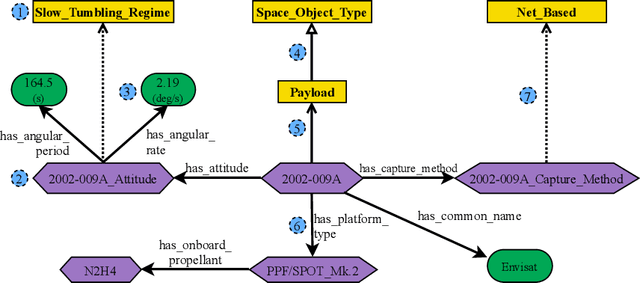
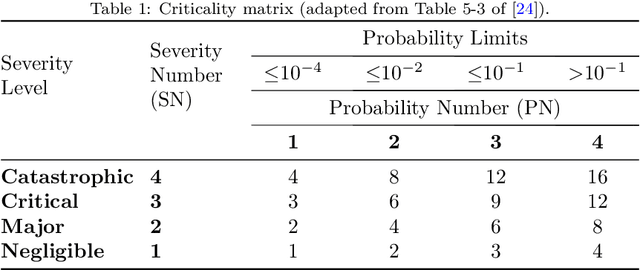
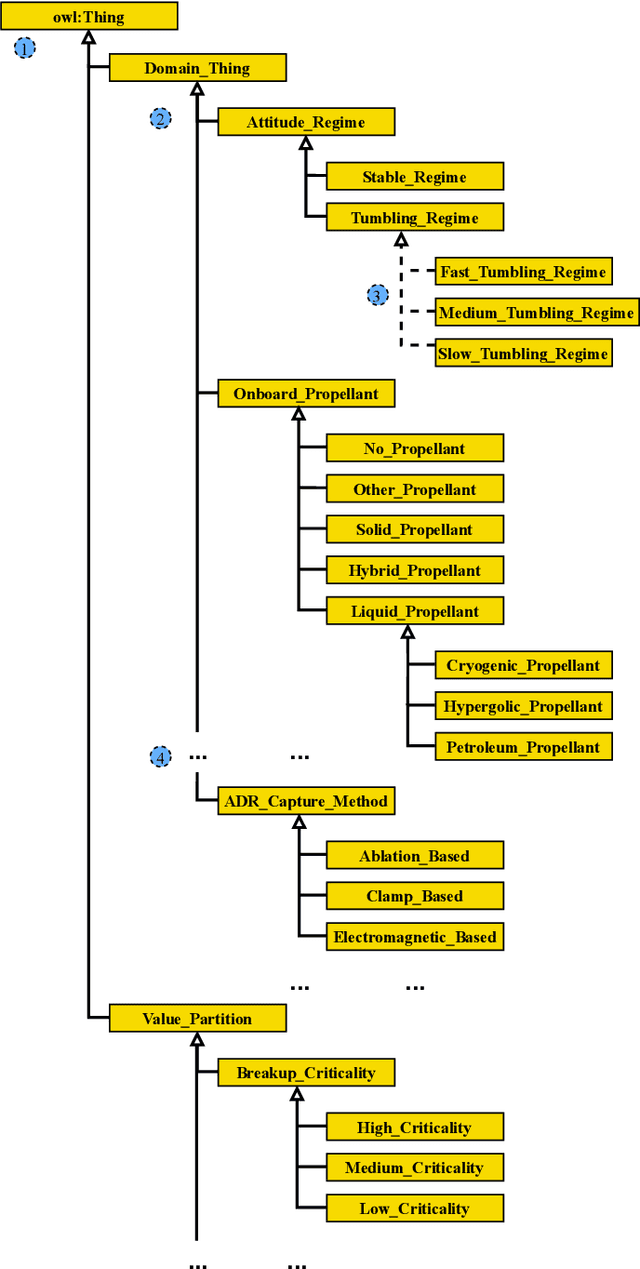
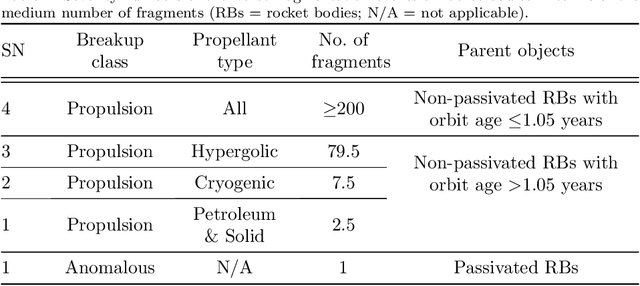
Abstract:Studies have concluded that active debris removal (ADR) of the existing in-orbit mass is necessary. However, the quest for an optimal solution does not have a unique answer and the available data often lacks coherence. To improve this situation, modern knowledge representation techniques, that have been shaping the World Wide Web, medicine and pharmacy, should be employed. Prior efforts in the domain of space debris have only focused onto space situational awareness, neglecting ADR. To bridge this gap we present a domain-ontology of intact derelict objects, i.e. payloads and rocket bodies, for ADR capture methods selection. The ontology is defined on a minimal set of physical, dynamical and statistical parameters of a target object. The practicality and validity of the ontology are demonstrated by applying it onto a database of 30 representative objects, built by combining structured and unstructured data from publicly available sources. The analysis of results proves the ontology capable of inferring the most suited ADR capture methods for considered objects. Furthermore, it confirms its ability to handle the input data from different sources transparently, minimizing user input. The developed ontology provides an initial step towards a more comprehensive knowledge representation framework meant to improve data management and knowledge discovery in the domain of space debris. Furthermore, it provides a tool that should make the initial planning of future ADR missions simpler yet more systematic.
* 32 pages, 7 figures and 6 tables
 Add to Chrome
Add to Chrome Add to Firefox
Add to Firefox Add to Edge
Add to Edge